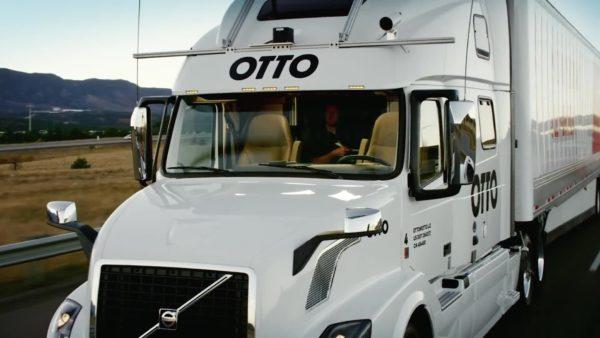Have you heard? Uber is hiring. CEO Travis Kalanick wants a chief operating officer. He apparently came to this decision in the midst of the company’s worst PR crisis yet. Accusations of a misogynistic company culture, a Google lawsuit, and allegations that it misled regulators with phantom rides leave the company in an almost permanent state of damage control. Hiring a COO almost certainly is Kalanick’s attempt to show that he, and his company, can grow up.
But COO doesn’t stand for chief optics officer. The title of chief operating officer suggests that anyone Silicon Valley’s quintessential tech bro hires would strive to improve Uber’s operations. Just look at what Sheryl Sandberg accomplished after stepping in at Facebook, led at the time by painfully awkward 24-year-old Mark Zuckerberg. Or the harmonious relationship former Google CEO Eric Schmidt forged with co-founders Larry Page and Sergey Brin while providing a healthy dose of what Schmidt unapologetically called “adult supervision.” Bringing in a top exec can drastically alter the trajectory of a company.
But Uber doesn’t suffer from an operations problem. To the contrary. The company excels at operations. Uber suffers from an image problem coupled with a culture problem. And that, as they say, starts at the top. To truly fix its problems, Uber shouldn’t hire a new COO.
It should hire a new CEO.
A Most Valuable Friend
From the start, Uber prided itself on a strategy of asking for forgiveness, not permission. Simply put, the company is a corporate jerk. It barges into cities and markets, thumbing its nose at local rules and regulations. It generates no end of bad press. And yet it thrives, expanding into new countries and attracting billions in funding.
Until now, it seemed the company could simply do whatever it wanted, consequences be damned. This crisis feels different. Susan Fowler’s public declaration of the sexism and misogyny she endured there shook the tech industry, and other Uber employees stepped forward and spoke out. Customers took a stand with the viral #DeleteUber campaign after the company appeared to take advantage of airport protests against President Trump’s travel ban. (It didn’t help that Kalanick briefly served on Trump’s Economic Advisory Council, a seat he surrendered amid public protest.) Investors started lambasting the company. Insiders feel free to leak damaging information to the press.
More Uber
Anyone taking the job of COO gets to wade right into this mess.
Sometimes you need a COO to fix a mess. Sandberg found herself at a company “primarily interested in building a cool site” with zero plans for profit. Some employees considered Sandberg too corporate for the company’s hacker culture. She soon convinced Facebook’s leadership to take its ad business seriously. The company turned a profit two years later. Now it’s a monolith.
But you can’t easily quantify what may be Sandberg’s biggest contribution to Facebook: Forging a partnership with Zuckerberg and becoming his “most valuable friend.” Their relationship started with Zuckerberg setting aside an hour each Monday morning to meet with Sandberg, according to a New York Times profile. He did the same each Friday. “We are constantly flagging things. Nothing ever builds up,” she told the Times. The more polished and personable Sandberg complemented a young CEO who had difficulty with public speaking. She constantly defended him, advocated for him, and helped him grow into a leader.
Chief Optics Officer
A new COO might do the same to soften Kalanick’s rough edges and help him behave like an adult. But the Zuckerberg-Sandberg relationship went beyond personality. It focused on business. Uber’s business doesn’t need help. A week before #DeleteUber trended in January, Uber reportedly held more than 80 percent of the ride-hailing market. Lyft gained a few percentage points in the wake of the campaign, and saw its market share climb a bit more after Fowler’s explosive blog post. And yet Uber has still seen downloads of its app linger above average in recent weeks, even if negative reviews run rampant. It still dominates the ride-hailing business it pioneered.
None of this is to say optics don’t matter—especially in Silicon Valley, where intense competition for talent requires keeping employees happy. Public image falls under the rubric of operations because no one wants to work for a company with a lousy reputation and sophomoric culture. If Uber can’t figure that out, the employees who actually keep the service running may start leaving.
On its face, hiring a new COO lets Kalanick show employees that he’s serious about getting “leadership help.” But as gestures go, few may buy it. “Most investors and potential employees would only be impressed if the CEO stepped down,” says John Sullivan, a human resources strategist and management professor at San Francisco State University. The problem is Kalanick seems reluctant to surrender control. That stands in stark contrast to Page and Brin, who relinquished command to Schmidt early on, a decision that arguably made Google the dominant—and dominantly profitable—company it is today.
In that light, Kalanick’s commitment to bring on a new COO leaves Uber in an awkward position that doesn’t address the fundamental problem. It’s too small a public act to be an effective statement, and it carves out a position for someone to address operational issues that don’t exist. “Uber needs a complete turnaround and not merely a tweak,” says Sullivan. Only one person can turn things around at Uber. And his best chance of doing that comes when he steps aside.



